Dissecting The Game: Hazard Design in Shovel Knight
I’m working on a game with enemies. We have some basic enemy types implemented, but we aren’t particularly happy with them. So we’re about to start a deep dive into enemy design in the coming weeks. What better way to get some ideas than looking at the design of enemies in other games. Here are my notes from looking at the first level of Shovel Knight.
Beetle
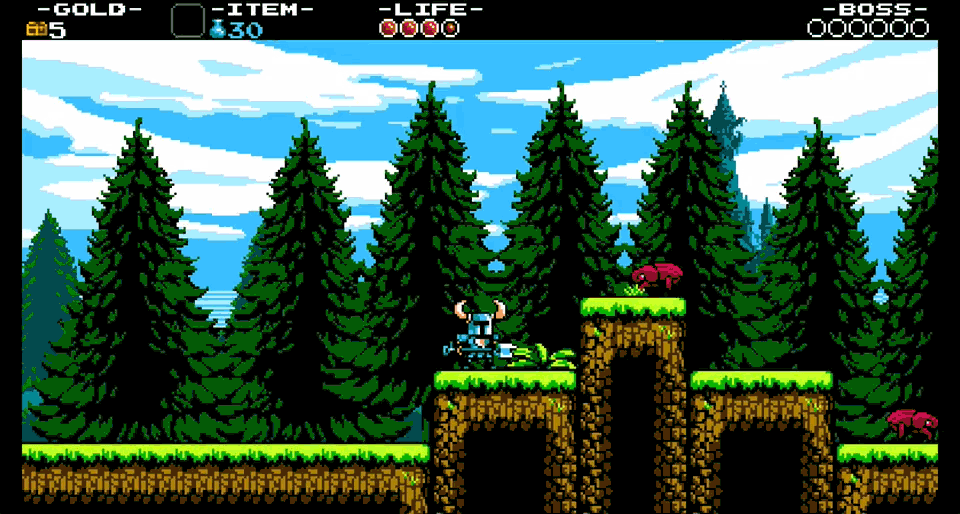
You run into beetles right out of the gate. They pace back and forth. You run into them, you get hurt. You dig at them with your shovel and they die in one hit. As simple as an enemy gets. Interestingly, beetles move beyond their role as an introductory enemy and continue to appear throughout the entire level as more complex and difficult enemies are introduced. They end up providing a sort of respite — a feeling of expertise tucked between greater challenges.
Bubble
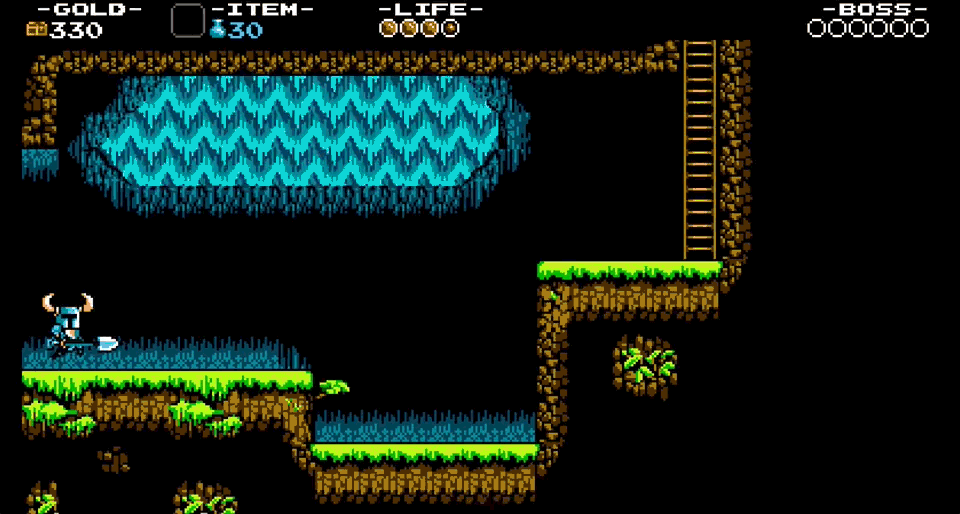
If you touch a bubble it hurts you. However, if you down-attack you can use the bubble to boost to previously unreachable heights. This also introduces down-attacking enemies as a concept. We’ll see the same damage-dealing bubbles wielded by a later enemy.
Spikes
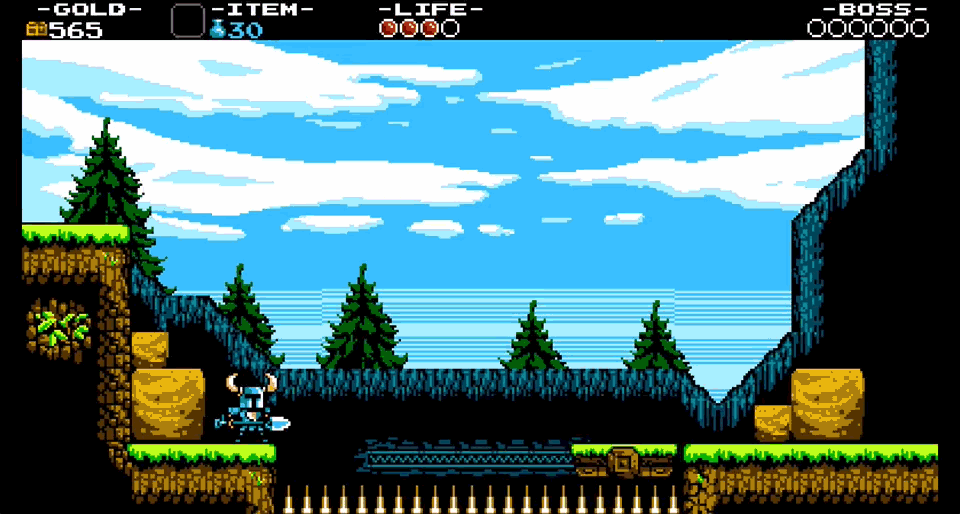
Spikes kill you instantly on hit. This is pretty interesting since this section could also just have a pit beneath it which accomplishes the same death condition. Spikes do feel more dangerous than a void, though.
Bubble Dragon
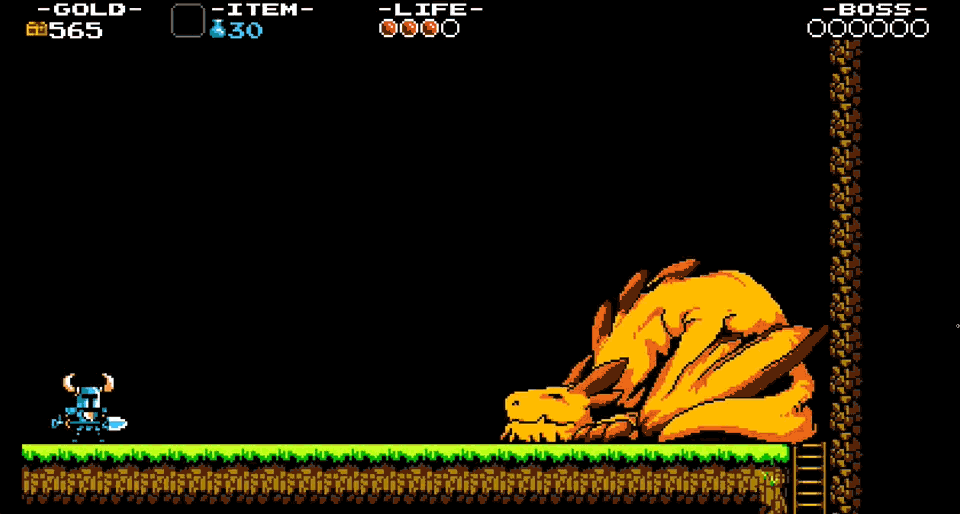
At this point in the first level there is a sudden difficulty spike. You come across this dragon that blows bubbles. These are the same bubbles as the player encounter earlier, but this time are being aggressively blown in your direction. If the dragon doesn’t take damage it takes a step towards the player. There are two major routes to handling this sudden challenge.
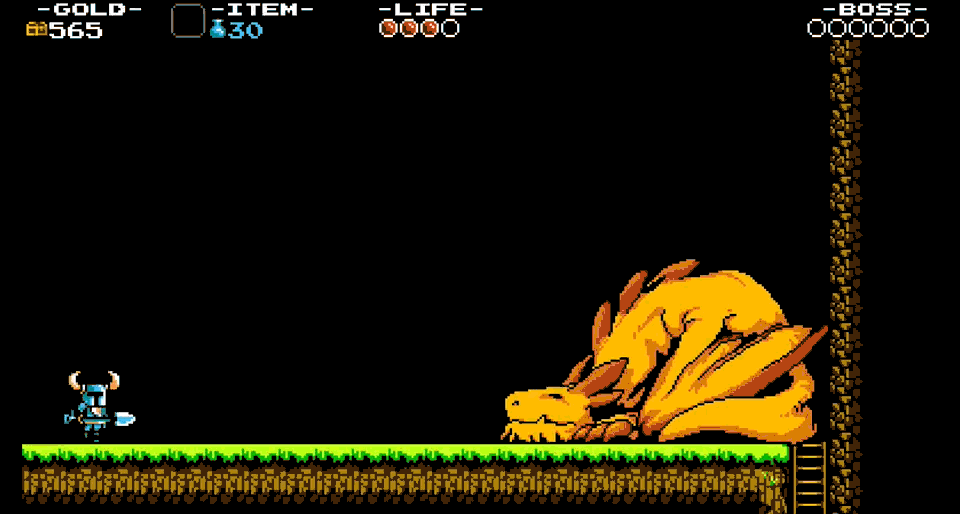
1. The poke-and-run. Run at the dragon, dig at it, run away before it blows bubbles. Pretty tedious but easy enough when you get the hang of it.
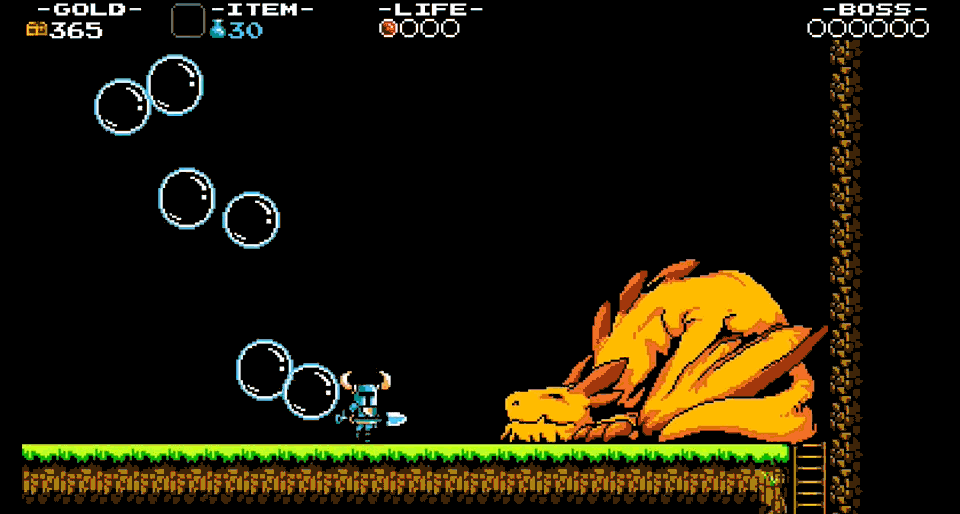
2. The down-attack volley. Using your down attack you can bounce on the dragon’s head to do damage very quickly.
This use of a difficulty spike is really interesting. The bubble dragon is far more complex than anything the player has encountered previously, takes way more hits to kill, and is also visually much more intimidating. It’s also the first creature to acknowledge the player exists (by attacking them). This enemy recontextualizes the difficulty the player has experienced thus far. Suddenly everything before and after feels like a cakewalk. It’s a sudden ask for player engagement and attention that makes other portions of the level feel like a break.
Skeleton Swordsman
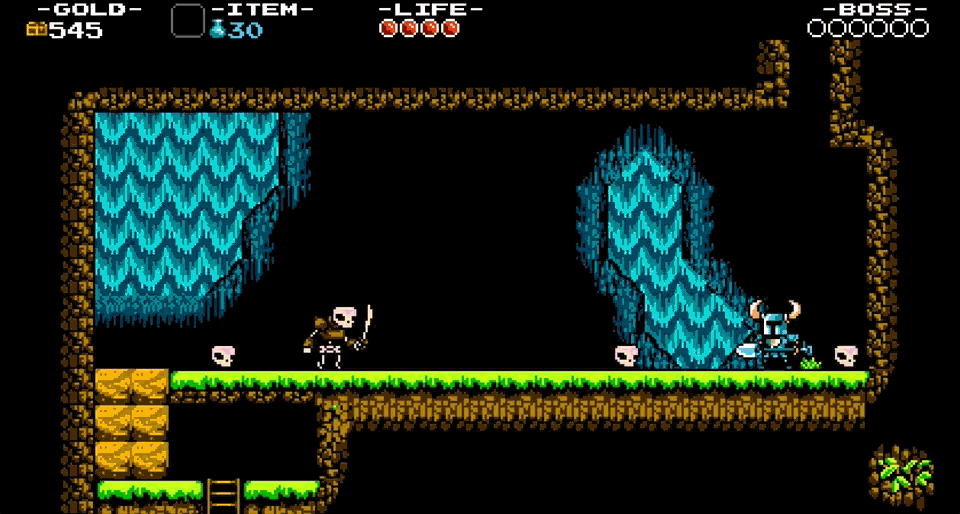
After the dragon, the skeleton swordsman is a relief. The swordsman is aware of the player, chases them, and attacks within a certain range. An interesting thing that the swordsman does is randomly back away from the player — you can see it for a moment in the above gif, but it often does it for longer periods of time. That slight randomness gives the enemy a sense of being alive. This enemy takes two hits to kill.
Goo
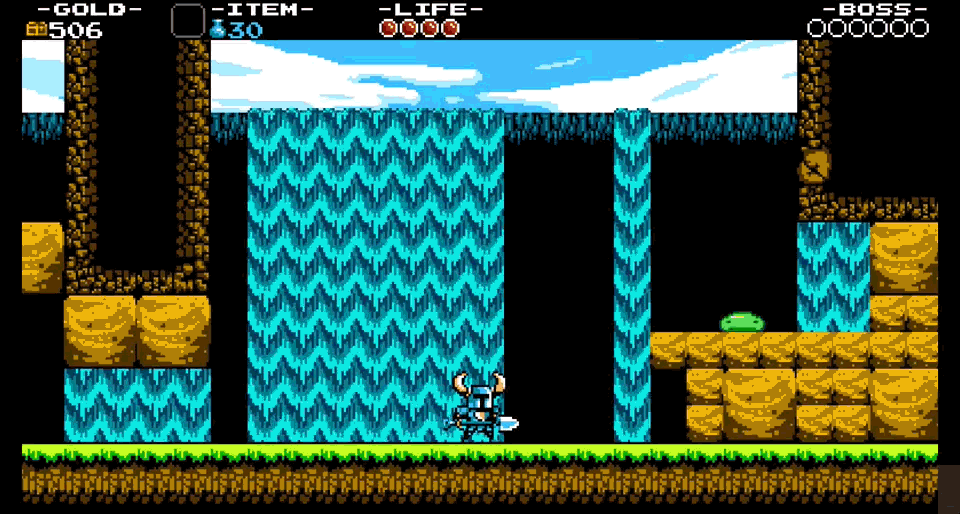
At first the goo seems redundant with the beetle. Another simple enemy that is unaware of you that marches in a direction. However, there are two key differences. The first is that the goo falls off of ledges. This complicates things in a subtle way. Where previously you could compartmentalize a beetle’s existence to a single ledge in the level, the goo keeps on moving and can appear after you’ve forgotten about it, suddenly raising the complexity of encounters. The second difference is that every once and a while it hops.
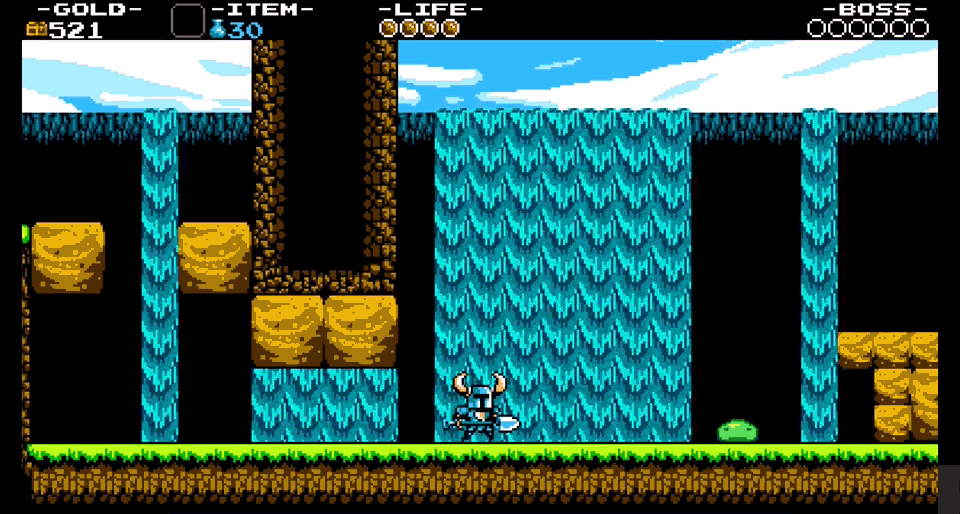
This added randomness further increases the chaos this seemingly benign enemy can cause. It also takes two hits to kill, a step up from the one hit it takes for the beetle.
Floaty Dragon
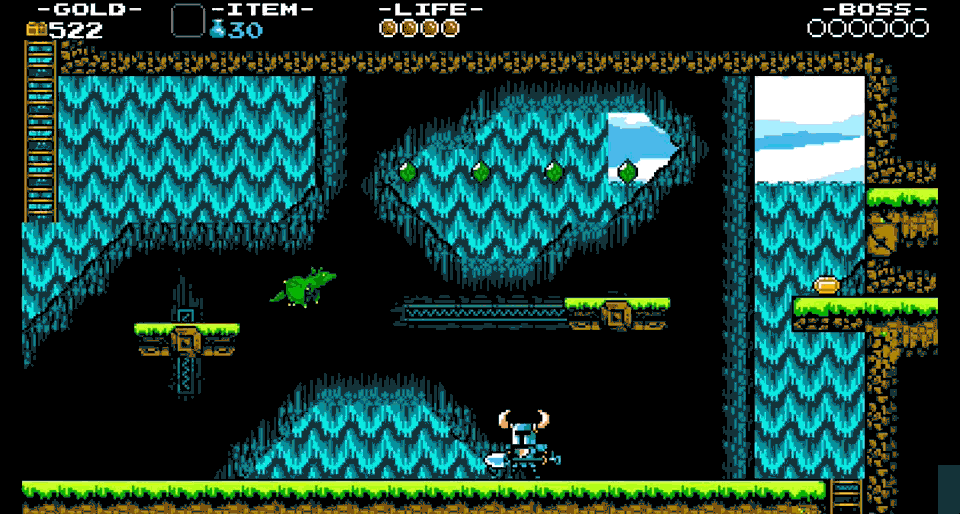
Another dragon, but this one’s pretty disinterested in you. The first time you see a floaty dragon it has a small circular flight path. Later in the level you see several other variations.
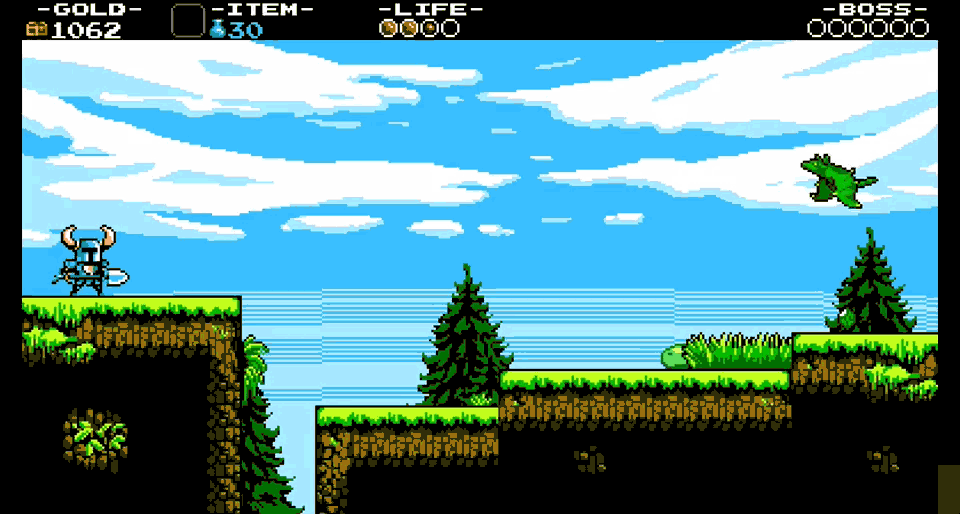
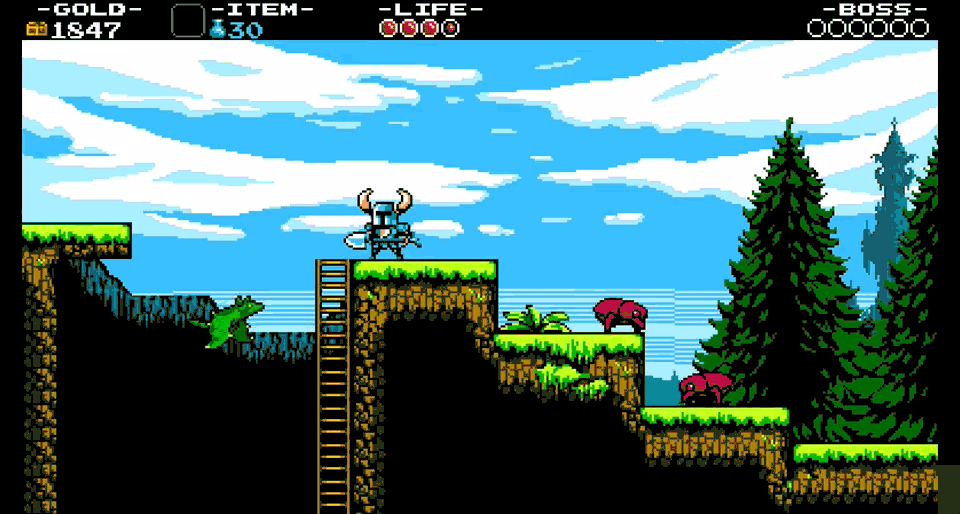
The floaty dragon fills a sort of all-purpose aerial obstacle role. However, in the first and last examples it also fulfills a secondary purpose as indicating where optional content lives. Down-attacking the dragon allows you to reach platforms to bonus content (the platform to the left in the last gif for example). Interestingly, once a floaty dragon is dead it does not respawn until you enter the room. This is unlike bubbles which respawn once you use them — another indicator that you don’t necessarily have to bother with content reachable by down-attacking them. Floaty dragons take two hits to kill.
Dark Knight
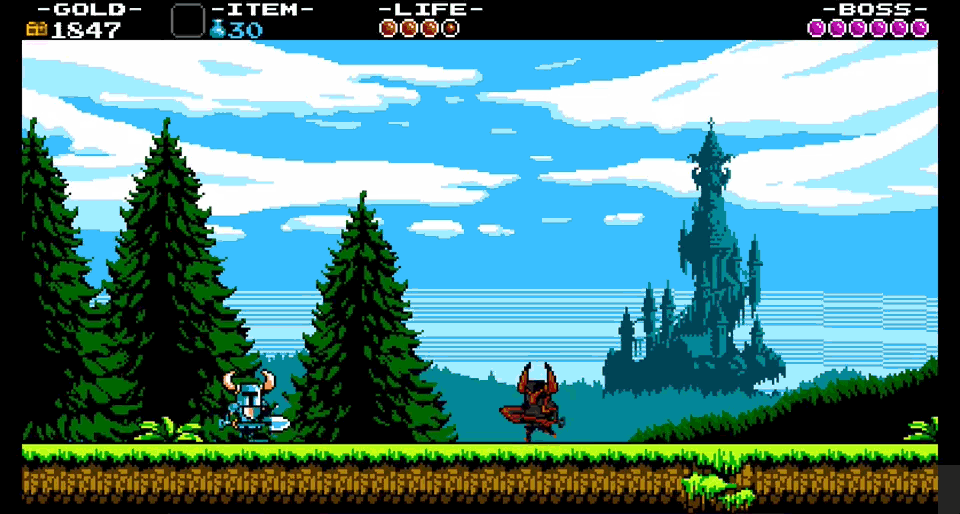
After these enemies we reach the boss of the first level — Dark Knight. In many ways this is a mirror matchup. The knight’s first attack is a dig identical to the player’s. The second attack is a down attack, with a little more flare than the player is used to.
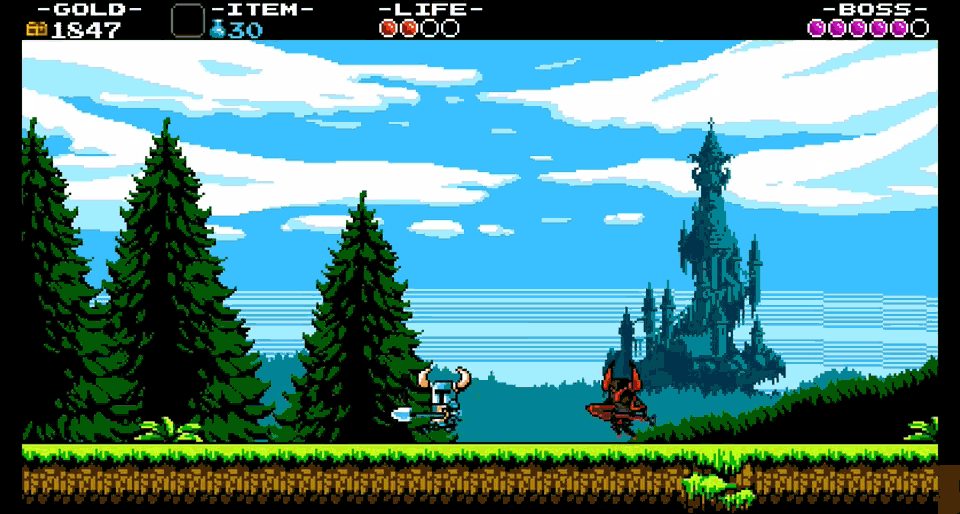
And the final attack used against the player is an enviable laser-blast.
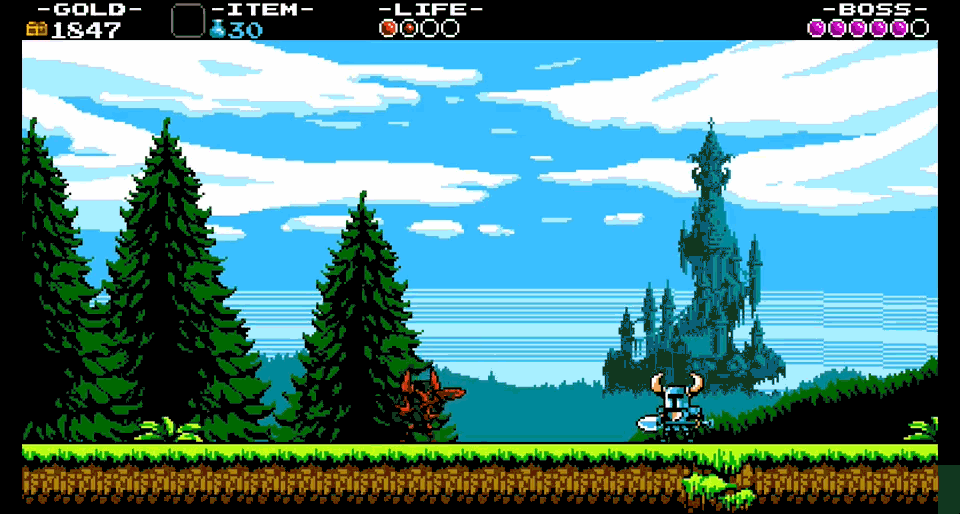
This is the second large difficulty spike in the level, but interestingly is largely a variation on things the player has already seen. The first two attacks are different versions of what the player has been using the entire level. The last attacks feels out of left field at first, but could be seen as a recreation of the obstacle created by a horizontal floaty dragon.
Conclusion
So in the first level we saw seven enemies and one boss type introduced. These hazards and enemies help introduce the mechanics Shovel Knight is built around — running, jumping, digging, and down-attacking.
It’s really interesting to see how the designers ramped up from a pacing beetle to a battle with an empowered mirror image of yourself within a single level by using varied enemy movements, attacks, and difficulties. I’m now coming back to my own game with questions about how we vary difficulty, ideas for giving the player easy fodder for confidence building, and how we can add variety to existing designs to create new enemy types. It’s a reminder that inspecting the work of others can be a route to finding important questions to ask about your own work.
Member discussion